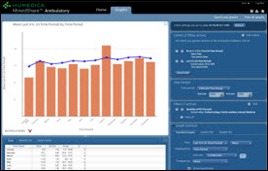News 5/17/11
The City of Philadelphia selects eClinicalWorks to provide its EHR/PM solution for the Department of Public Health, which includes 230 providers and 20 primary care and correctional clinics. The eCW folks reminded me that they are also working with the San Francisco Department of Health and the NYC Department of Health and Mental Hygiene.
Dunes Family Health Care (OR) notifies over 16,000 current and former patients of a potential data breach following the the theft of a hard drive. The clinic says the drive was “stored in a locked, fire-protected building with limited access” and contained medical record information. The practice also indicates that they’ve now encrypted their data, so presumably that wasn’t the case with the information on the missing drive.
McKesson medical director David K. Nace, MD is named first vice chairman of the board of directors for the Patient-Centered Primary Care Collaborative.
Thirty-four percent of all office-based prescribers were using e-prescribing by the end of 2010. Cardiologists had the highest adoption rates (49%) followed by family physicians (47%.) Providers created 326 million e-prescriptions in 2010, up from 190 million in 2009. Still, that’s only about 25% of all eligible prescriptions.
meridianEMR names CDW Healthcare as its preferred provider of IT infrastructure and services for its meridianEMR solutions.
eClinicalWorks negotiates a Tax Increment Financing plan with the city of Westborough, MA. The city will extend more than $190,000 in tax breaks to eCW in exchange for the company’s decision to keep its headquarters in Westborough. Last year the company purchased a new facility for $4.6 million; eCW is investing over $14 million in the property.
The AMA Board of Trustees argues that any attempts to standardize EMRs would stifle product innovation. Two years ago, the AMA announced it was in favor of standardized user interfaces, but now admits there’s a “lack of evidence about what constitutes an ideal user interface in a health care environment.” The AMA provides an opinion of what characteristics should be considered in the development of an effective user interface, including simplicity, an organized structure, easily visible options, easy-to-interpret user feedback, and a flexible and tolerant structure that helps prevent errors.
Trend alert: demand for workplace health clinics is on the rise as companies attempt to reduce costs and increase worker productivity.
The Association of Black Cardiologists partners with DrFirst to offer its members DrFirst’s clinical solutions. The Association hopes to drive HIT adoption rates among African American cardiologists and close the “digital divide” that separates minority providers from other physicians.
The 10 hospital and physician groups that participated in ACO demonstration projects contend that CMS’s proposed ACO framework holds too much financial risk. Participants in the Physician Group Practice Demonstration said in a letter to CMS that the proposed structure would cost more than it would save and would penalize physicians who treat the sickest patients. Last week, AMGA and CHIME also raised objections to the preliminary ACO model.
Mr. H is forever giving me a hard time because I love news that involves lots of stats (must be that economics/MBA background.) Someone at Nuesoft must be a number lover, too because the company’s latest newsletter includes all these fun facts. If you prefer visual stimulation over number-crunching, check out NueTube for Nuesoft’s library of well-done training on demand videos. The ABCs of RECs is also a good read.

























The article about Pediatric Associates in CA has a nugget with a potentially outsized impact: the implication that VFC vaccines…